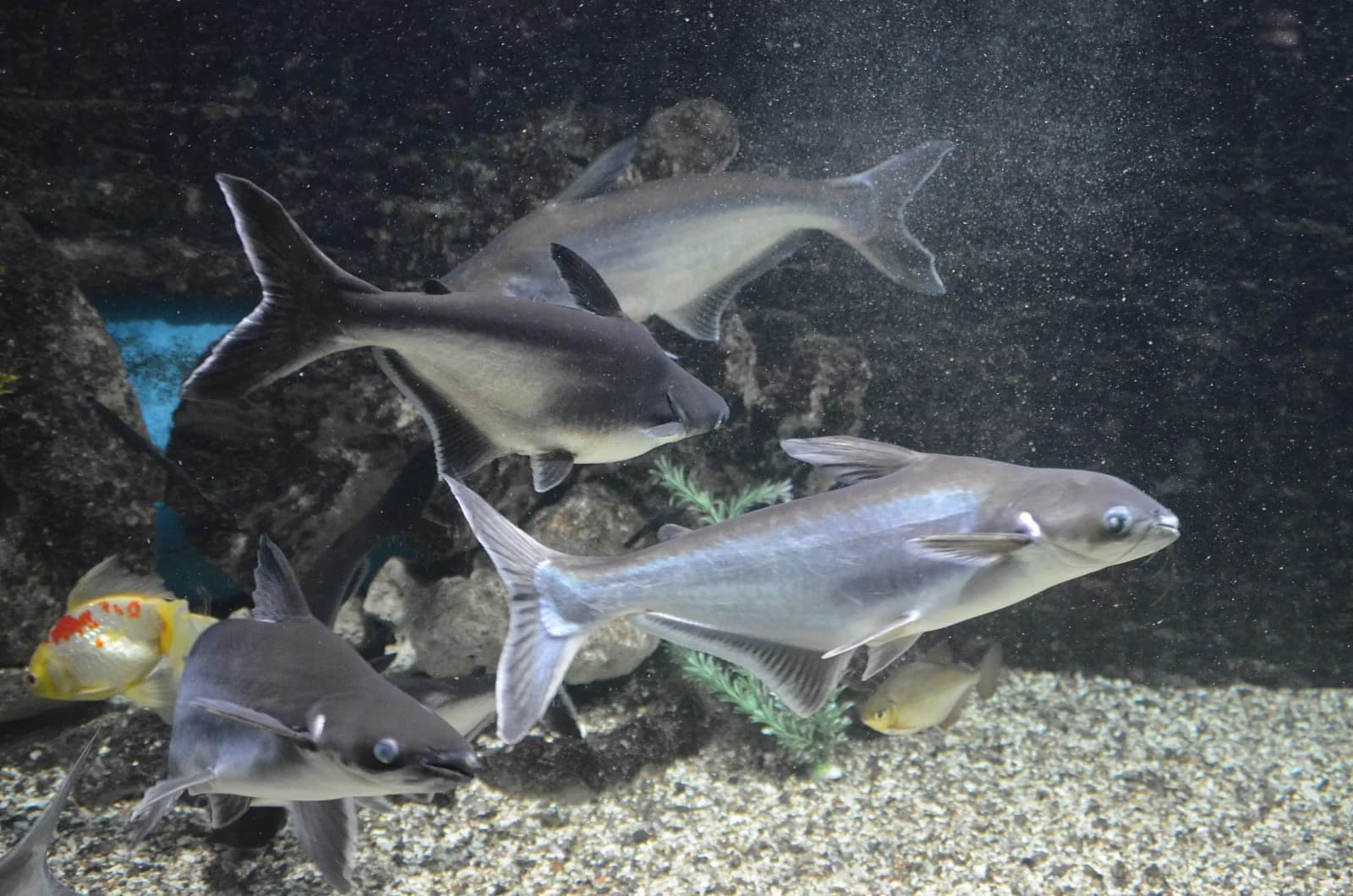The Pangasiidae catfish aka shark catfish is a fish species found in both brackish and fresh waters across southern Asia. One of the most distinctive features of the Pangasiidae catfish is that they usually have two pairs of barbels. One pair is chin barbels and another pair is maxillary barbels, and these whisker-like appendages’ job is to detect food. This catfish species is among the commonly consumed and farmed fish species in Cambodia. They have a mild flavor, and they are ideal in a number of dishes. Let’s check out the 5 Pangasiidae catfish species with me below.
Basa Catfish (ត្រីប្រាខ្ចៅ)
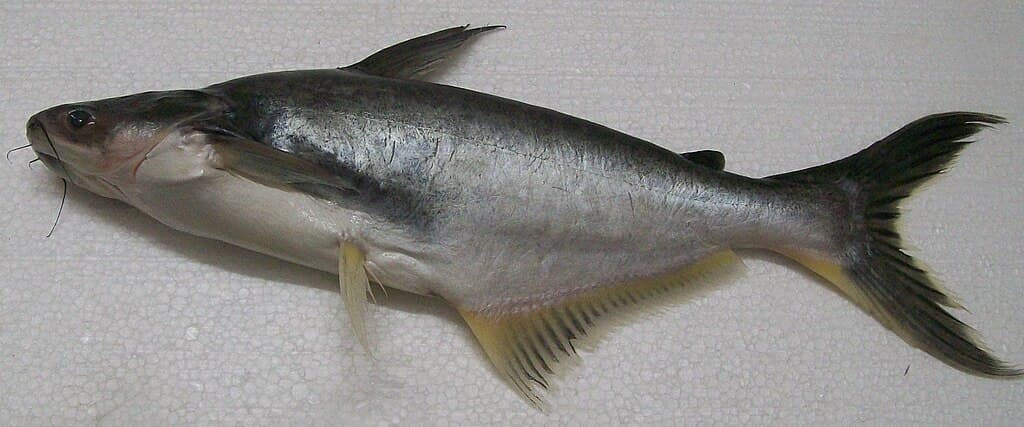
Scientific Name: Pangasius Bocourti
A basa catfish is stout, it has a rounded head that is broad and it has a blunt snout. It is a heavy and scaleless fish, and it can reach a maximum length of 120 centimeters long. The fish’s broad mouth has small sharp teeth, and it has two pairs of barbels with the upper being shorter than the lower. This Pangasiidae catfish species is uniformly gray in color but greenish tints and silvery sides are common. Just like many other catfish species out there, this one is also native to the Mekong and Chao Phraya basins. Where they live, they feed on plants. In Mainland Southeast Asia, these fish are very important as a food source and they are common in so many dishes.
Mekong Giant Catfish (ត្រីរាជ)
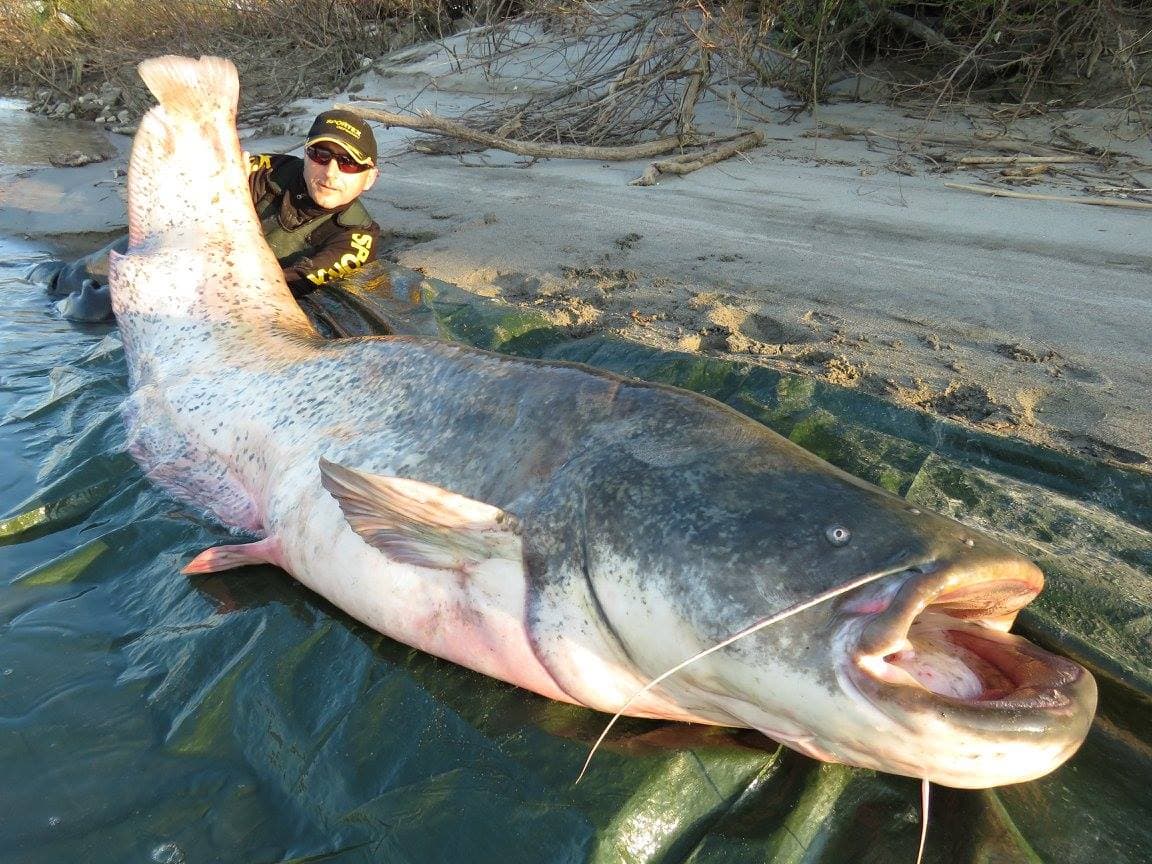
Scientific Name: Pangasianodon Gigas
Here you are looking at the largest catfish and the largest freshwater fish in the world, the Mekong giant catfish. A Mekong giant catfish is gray to white in color, and it can reach a length of up to 3 meters. What’s so unique about this catfish compared to its family members is the near-total lack of barbels and the absence of teeth. While the young still have barbels and oral teeth, these features diminish as they mature. So by the time this river giant is 30 to 50 centimeters, these two features are no longer there. Another thing is that the Mekong giant catfish has very low-set eyes which give them a sorrowful appearance. Plus the fact that they are critically endangered, looking at them is just sad.
Mekong giant catfish is native to the Mekong basin in Southeast Asia and adjacent to China. Its range used to be along the entire course of the Mekong River, stretching from Vietnam all the way to China. Now, they only inhabit the waters of the Lower Mekong which is a fragment of its prior home. Being such a large fish, it is not a surprise that they are also cannibalistic. However, this catfish begins their early age feeding on zooplankton before becoming an herbivore feeding on filamentous algae. Unfortunately, this Pangasiidae catfish species is considered critically endangered due to habitat loss and overfishing. The main concern in 2024 now is that damn buildings and unsustainable fishing could drive them to extinction. Without an urgent reaction, there is a high chance that the Mekong giant catfish will be no longer with us.
Snail Eating Catfish (ត្រីប្រាកែ)
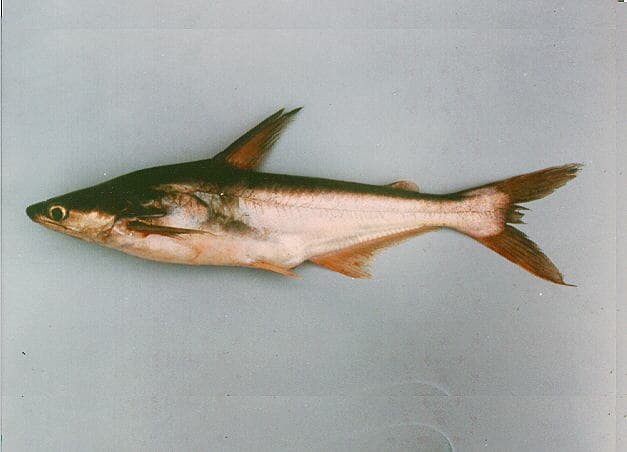
Scientific Name: Pangasius Conchophilus
The snail eating catfish is a shark catfish species of the Pangasiidae catfish species family. Its dorsum is dull gray in color with a pale green iridescence, and it can reach a length of 120 centimeters. This fish is a bit of everything as it is a freshwater, benthopelagic, potamodromous, and tropical fish. These catfish have a distribution in the Bangpakong, Chao Phraya, and Mekong Basins where they inhabit large rivers. They also enter flooded forests, and it is also not uncommon to find them in deep slow reaches and rapids. Juveniles feed on insects and prawns, and adults feed on insects, mollusks, plants, and prawns.
Spotted-Ear Catfish (ត្រីពោ)
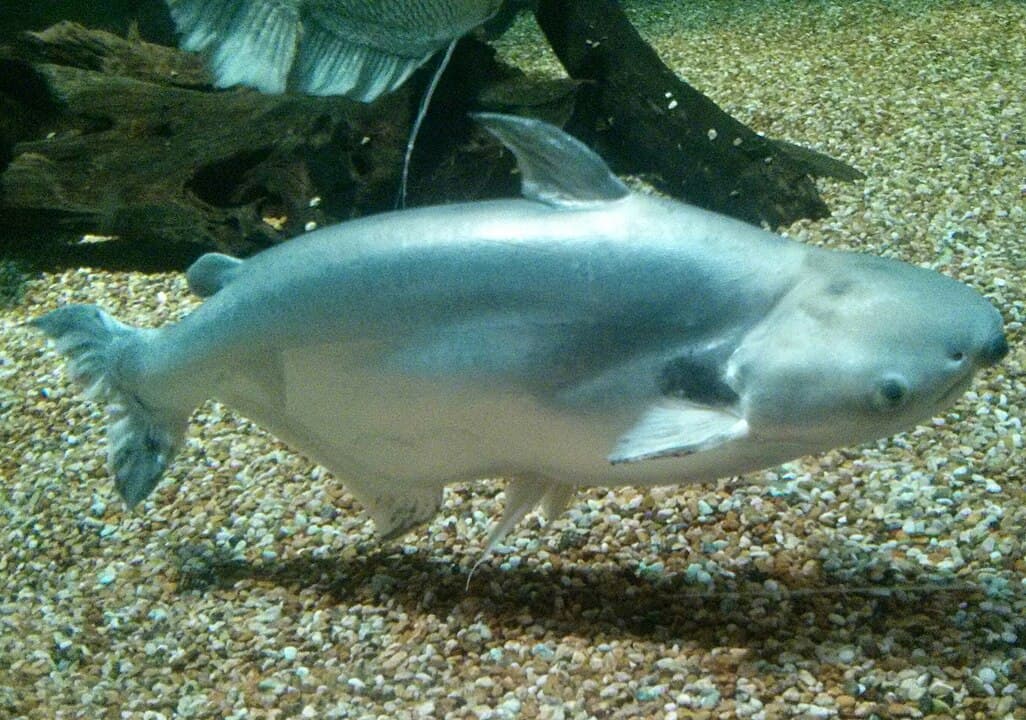
Scientific Name: Pangasius Larnaudii
Spotted-ear catfish are interesting catfish species when it comes to the appearance. It has a gray body with a large spot above the base of the pectoral fin. This fish also has a black longitudinal stripe along each caudal lobe as well. An adult can reach a length of up to 130 centimeters which is very large. Not different from the rest of the Pangasiidae catfish species on the list, this one is also native to Mekong and Chao Phraya Basins. They inhabit deep pools in the river, and it is common to find them in rapids and riffles as well as flooded forests. And like most catfish, it will eat any fish and anything that fits into its mouth.
Sutchi Catfish (ត្រីប្រាធំ)
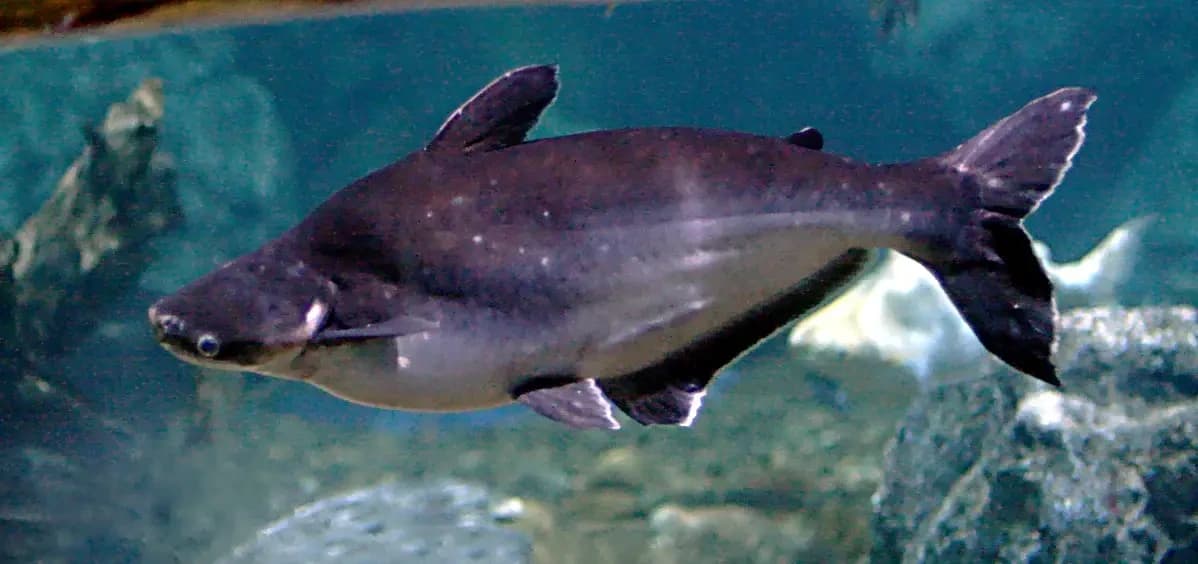
Scientific Name: Pangasianodon Hypophthalmus
The Sutchi catfish has a unique nickname, iridescent shark or iridescent shark catfish when it is not related to a shark at all. It got its nickname from the iridescence that the juveniles have and the shark-like appearance. An adult Sutchi catfish can reach up to 130 centimeters long with a weight of up to 44 kilograms. Adult Sutchi catfish are uniformly gray with dark gray or black fins. The striking appearance with the iridescent glows actually makes this catfish popular among fishkeeping hobbyists out there.
Sutchi catfish is found in the Mekong basin and the Chao Phraya River where they are heavily cultivated for food. This catfish inhabit large rivers where they feed on crustaceans, fish, and vegetable debris that they can find. As migratory fish, Sutchi catfish move upstream of the Mekong to spawn in May to July before returning to the mainstream. They also have their downstream migration that takes place from May to August from Steung Treng to Kandal in Cambodia. Being one of the most common Pangasiidae catfish species in Cambodia, the Sutchi catfish is a very popular food.
Related Post: Clariidae Catfish Species
